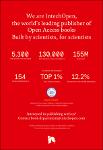Search
Author
- Alisher, Mirzabaev (1)
- Barbara, Gworek (1)
- Ephraim, Nkonya (1)
- Gergely, Buda (1)
- next >
Subject
- environmental economics (2)
- Phát triển bền vững (2)
- biodiversity (1)
- bioeconomy (1)
- next >
Date issued
Has File(s)
- true (4)
Search Results
Sustainable development is the 21st Century's wicked problem. After 40 years into this agenda have reversed only few unsustainable trends we hear the call for aparadigm shift, transformation, radical change or system innovations in order to finally change course. But what does this actually mean? And how do we put it into practice? This book describes the path ahead. It combines system transformation research with political economy and change leadership insights when discussing the need for a great mindshift in how human wellbeing, economic prosperity and healthy ecosystems are understood if the Great Transformations ahead are to lead to more sustainability. It shows that history is made by purposefully acting humans and introducestransformative literacy as a key skill in leading th... |
In this chapter, the life cycle assessment was presented as a tool to implement sustainable development in the bioeconomy and circular economy. Bulky waste includes large items such as furniture, doors, flooring and mattresses. The management of bulky waste is a serious problem for European countries. The URBANREC project proposed a solution to this problem through the use of new technologies for the bulky waste processing. The aim of the URBANREC project is to implement an eco-innovative, integrated system of bulky waste management and demonstrate its effectiveness in various regions of Europe. The project has received funding from the European Union. In this chapter, the LCA environmental analysis was performed for the technology of grinding bulky waste using a water jet by the Ec... |
This volume deals with land degradation, which is occurring in almost all terrestrial biomes and agro-ecologies, in both low and high income countries and is stretching to about 30% of the total global land area. About three billion people reside in these degraded lands. However, the impact of land degradation is especially severe on livelihoods of the poor who heavily depend on natural resources. The annual global cost of land degradation due to land use and cover change (LUCC) and lower cropland and rangeland productivity is estimated to be about 300 billion USD. Sub-Saharan Africa (SSA) accounts for the largest share (22%) of the total global cost of land degradation. Only about 38% of the cost of land degradation due to LUCC - which accounts for 78% of the US$300 billion loss - ... |
The aim of this article is to analyze how the concept of circular economy and especially the business model of industrial symbiosis can contribute to sustainable development in Uganda. We aim to add to emerging debates around green industrial policies by shedding light on a low-cost solution that can potentially promote a more sustainable industrialization in the Sub-Saharan African context. After sketching the regulatory and policy environment in Uganda, three indicative examples of industrial symbiosis in Uganda are analyzed, based on the result of field research and an online survey. |




